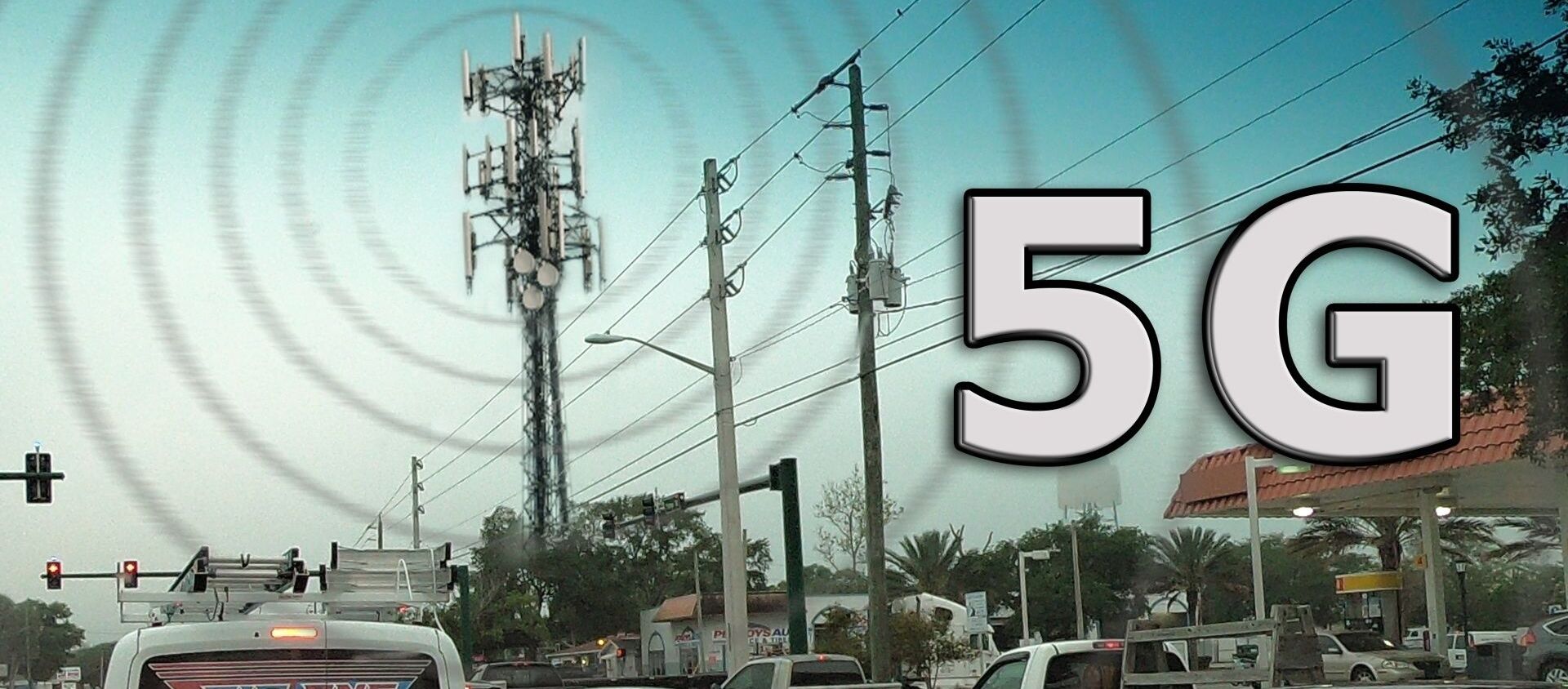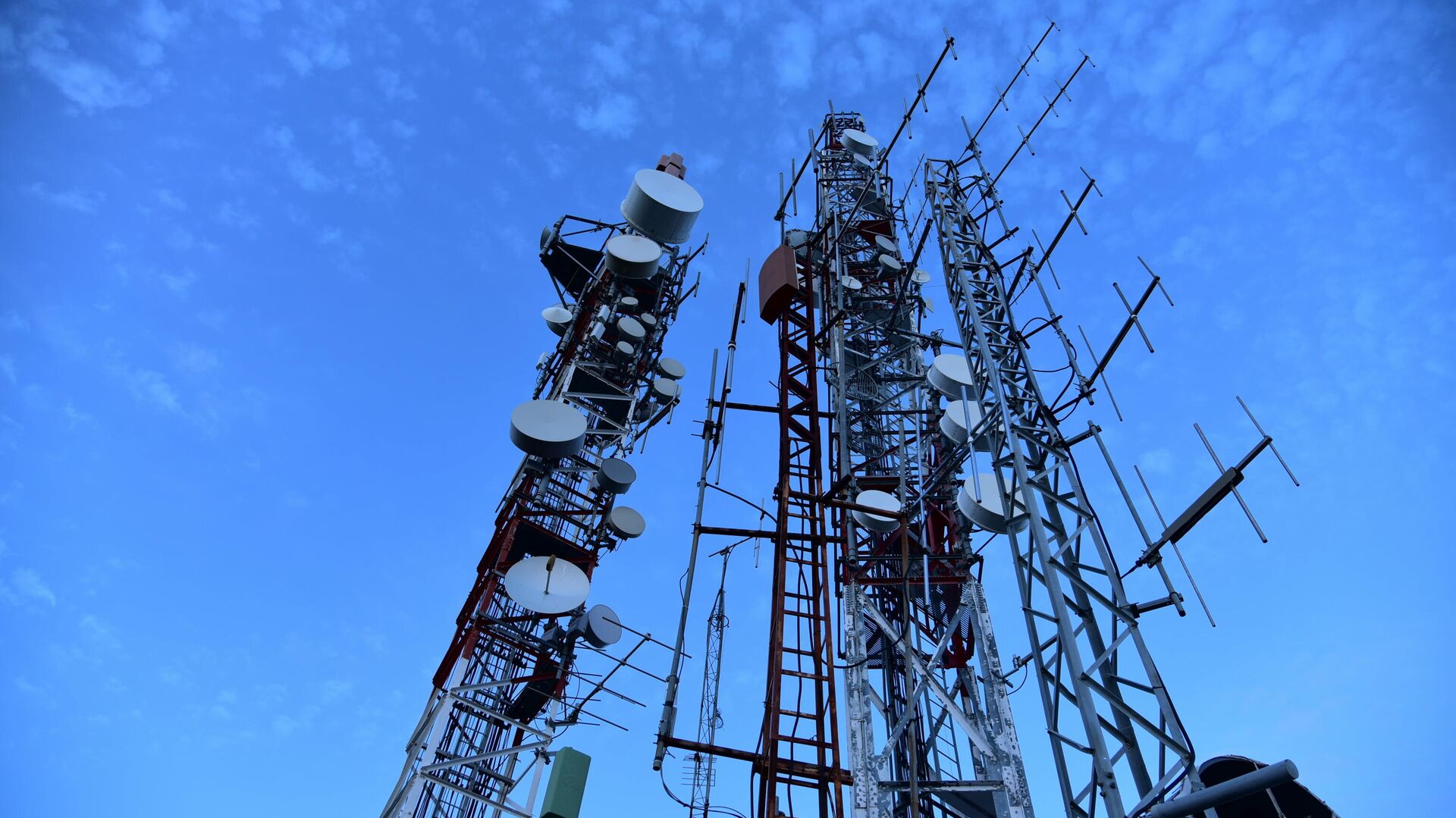https://sputnikglobe.com/20211224/faa-warns-5g-could-render-equipment-used-for-landing-in-low-visibility-conditions-useless-1091774781.html
FAA Warns 5G Could Render Equipment Used for Landing in Low-Visibility Conditions Useless
FAA Warns 5G Could Render Equipment Used for Landing in Low-Visibility Conditions Useless
Sputnik International
Countries began rolling out the 5G (fifth generation) standard for broadband cellular networks in 2019, with the infrastructure expected to provide internet up... 24.12.2021, Sputnik International
2021-12-24T11:39+0000
2021-12-24T11:39+0000
2021-12-24T11:53+0000
us federal aviation administration
5g
safety concerns
concerns
https://cdn1.img.sputnikglobe.com/img/07e5/0c/18/1091772545_0:67:3067:1792_1920x0_80_0_0_ade5294934982f626a6f755e25eef8b3.jpg
The US Federal Aviation Administration has issued a Special Airworthiness Information Bulletin on the risks potentially associated with 5G C-band stations and their impact on aircraft radio altimeters.“Results from that testing and assessment should be reported to the appropriate civil aviation authorities (CAAs) and spectrum regulators,” the document notes. The regulator does not elaborate by what date it expects the information to be provided back, or how it will be used.What Do Radio Altimeters Do?Radio altimeters are a key safety feature of commercial, transport and military aircraft, assisting in landing in low-visibility conditions. They are typically bolted to the bottom of an aircraft’s airframe, transmitting radio signals to terrain below and measuring how long it takes for the signal to reflect back to the plane to determine altitude.In addition to altimeters themselves, the FAA warns that issues associated with them could affect over a dozen other components.The agency indicates that it is “conducting a risk assessment to ascertain whether further mitigation is warranted in addition to the recommended actions” outlined in the bulletin, and that it will “update its risk assessment” if “additional information further validates or invalidates concerns of potential harmful interference.”The bulletin follows the release of a separate Airworthiness Directive (AD) on 7 December warning that transmissions in the above-mentioned frequencies could affect radio altimeters aboard planes using the 4200-4400MHz range in major urban areas. The FAA is able to legally enforce the AD’s guidelines to prevent unsafe use of a particular product – in this case radio altimeters, and the directive affects the entirety of the US commercial airline fleet, and many private jets, affecting 6,834 aircraft, total.The dispatch comes ahead of the expected 5 January rollout of new 5G C-Band frequencies in the 3700-3800MHz range (eventually expandable to 3980MHz) by major US cellular providers AT&T and Verizon.Aircraft giants Boeing and Airbus have called for further delays in the rollout until the issue can be dealt with, penning a letter to Biden transportation secretary Pete Buttigieg, who is on paternity leave despite the ongoing supply chain crisis facing the US, earlier this month warning that “5G interference could adversely affect the ability of aircraft to safely operate”.The concerns expressed by the FAA and aircraft manufacturers come amid the continued global rollout of 5G, the next-gen high-speed internet technology promising mobile data-transfer speeds between 50 and 100 times faster than 4G. The standard is expected to eventually power everything from autonomous vehicles and smart homes to toasters, toilets and hairbrushes connected to the internet, as well as things like security and surveillance systems used by governments, corporations and consumers.Mobile providers began the deployment of the 5G standard in 2019, with over 200 operators in 90+ countries building networks or preparing to do so, and South Korea, China and the United States leading the world in adoption.In addition to its potential impact on aircraft, industry experts have expressed concerns about 5G’s potential to impact other man-made infrastructure, including weather forecasts, GPS, and Wi-Fi in built up areas. Manufacturers maintain that the technology is completely safe. Some researchers have also expressed fears about the new cellular standard’s impact on human and animal health.
https://sputnikglobe.com/20200926/-leakage-from-5g-network-could-lead-to-dodgy-weather-forecasts-new-study-claims-1080579381.html
Sputnik International
feedback@sputniknews.com
+74956456601
MIA „Rossiya Segodnya“
2021
News
en_EN
Sputnik International
feedback@sputniknews.com
+74956456601
MIA „Rossiya Segodnya“
Sputnik International
feedback@sputniknews.com
+74956456601
MIA „Rossiya Segodnya“
us federal aviation administration, 5g, safety concerns, concerns
us federal aviation administration, 5g, safety concerns, concerns
FAA Warns 5G Could Render Equipment Used for Landing in Low-Visibility Conditions Useless
11:39 GMT 24.12.2021 (Updated: 11:53 GMT 24.12.2021) Countries began rolling out the 5G (fifth generation) standard for broadband cellular networks in 2019, with the infrastructure expected to provide internet up to 100 times faster than 4G, and facilitate the creation of the so-called ‘internet of things’, an ambitious plan to plug even more of our lives and objects around us into the internet.
The US Federal Aviation Administration has
issued a Special Airworthiness Information Bulletin on the risks potentially associated with 5G C-band stations and their impact on aircraft radio altimeters.
“The SAIB recommends that radio altimeter manufacturers, aircraft manufacturers, and operators voluntarily provide to federal authorities specific information related to altimeter design and functionality, specifics on deployment and usage of radio altimeters in aircraft, and that they test and assess their equipment in conjunction with federal authorities,” the bulletin, published Thursday, urges.
“Results from that testing and assessment should be reported to the appropriate civil aviation authorities (CAAs) and spectrum regulators,” the document notes. The regulator does not elaborate by what date it expects the information to be provided back, or how it will be used.
What Do Radio Altimeters Do?
Radio altimeters are a key safety feature of commercial, transport and military aircraft, assisting in landing in low-visibility conditions. They are typically bolted to the bottom of an aircraft’s airframe, transmitting radio signals to terrain below and measuring how long it takes for the signal to reflect back to the plane to determine altitude.
In addition to altimeters themselves, the FAA warns that issues associated with them could affect over a dozen other components.
“Anomalous (missing or erroneous) radio altimeter inputs could cause these other systems to operate in an unexpected way during any phase of flight – most critically during takeoff, approach, and landing phases. These anomalous inputs may not be detected by the pilot in time to maintain continued safe flight and landing,” the SAIB says.
The agency indicates that it is “conducting a risk assessment to ascertain whether further mitigation is warranted in addition to the recommended actions” outlined in the bulletin, and that it will “update its risk assessment” if “additional information further validates or invalidates concerns of potential harmful interference.”
The bulletin follows the release of a
separate Airworthiness Directive (AD) on 7 December warning that transmissions in the above-mentioned frequencies could affect radio altimeters aboard planes using the 4200-4400MHz range in major urban areas. The FAA is able to legally enforce the AD’s guidelines to prevent unsafe use of a particular product – in this case radio altimeters, and the directive affects the entirety of the US commercial airline fleet, and many private jets, affecting 6,834 aircraft, total.
The dispatch comes ahead of the expected 5 January rollout of new 5G C-Band frequencies in the 3700-3800MHz range (eventually expandable to 3980MHz) by major US cellular providers AT&T and Verizon.
Aircraft giants Boeing and Airbus have called for further delays in the rollout until the issue can be dealt with, penning a letter to Biden transportation secretary Pete Buttigieg, who is on paternity leave despite the ongoing supply chain crisis facing the US, earlier this month warning that “5G interference could adversely affect the ability of aircraft to safely operate”.
The concerns expressed by the FAA and aircraft manufacturers come amid the continued global rollout of 5G, the next-gen high-speed internet technology promising mobile data-transfer speeds between 50 and 100 times faster than 4G. The standard is expected to eventually power everything from autonomous vehicles and smart homes to toasters, toilets and hairbrushes connected to the internet, as well as things like security and surveillance systems used by governments, corporations and consumers.

26 September 2020, 12:31 GMT
Mobile providers began the deployment of the 5G standard in 2019, with over 200 operators in 90+ countries building networks or preparing to do so, and South Korea, China and the United States leading the world in adoption.
In addition to its potential impact on aircraft, industry experts have expressed concerns about 5G’s potential to
impact other man-made infrastructure, including weather forecasts, GPS, and Wi-Fi in built up areas. Manufacturers maintain that the technology is completely safe. Some researchers have also
expressed fears about the new cellular standard’s impact on human and animal health.


